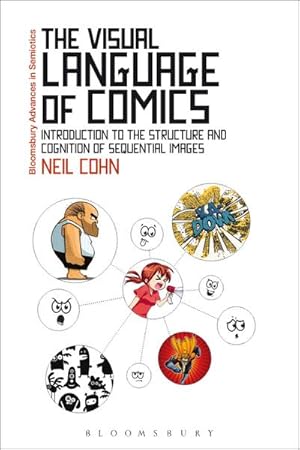bloomsbury academic dez 2013 (9 risultati)
Tipo di articolo
- Tutti gli articoli
- Libri (9)
- Riviste e Giornali
- Fumetti
- Spartiti
- Arte, Stampe e Poster
- Fotografie
- Mappe
-
Manoscritti e
Collezionismo cartaceo
Condizioni
- Tutte
- Nuovi
- Antichi o usati
Legatura
- Tutte
- Rilegato
- Brossura
Ulteriori caratteristiche
- Prima edizione
- Copia autografata (2)
- Sovraccoperta
- Con foto
- No print on demand
Paese del venditore
Valutazione venditore
-
Weed: The Poison Diaries
Editore: Bloomsbury Academic Dez 2013, 2013
ISBN 10: 1448214017ISBN 13: 9781448214013
Da: AHA-BUCH GmbH, Einbeck, Germania
Libro
Taschenbuch. Condizione: Neu. Neuware - Am I of the growing world, bound to the everlasting root, or am I simply a red-blooded man, destined to die -WeedThe seductive central character from the internationally acclaimed Poison Diaries, Weed, re-awakens in this book to a world where he must try to do good and learn from his allies in the plant world. But will this half-man, half-plant creature's desire for revenge weaken him, leading him to use the potency of his plant knowledge to do evil as well as good Powered by his connection to both healing and vicious plant life such as Belladonna, Hemlock, and Cannabis, Weed struggles against time and the temptations of the seductive women he meets on his journeys, traveling from his home at Alnwick Castle in Northumberland to Lindisfarne, London and the island of Anglesey in an adventure of love, betrayal, murder and salvation.Weed was conceived by Jane Northumberland - The Duchess of Northumberland - creator of the Poison Garden at Alnwick Castle and author of The Little Book of Poisons, Potions and Aphrodisiacs.Weed is brilliantly evoked here by Hugh Sington for the legions of fans worldwide who have been anxiously awaiting his return - now Weed is poised to rejoin the mortal world.
-
Quantitative Research in Linguistics
Editore: Bloomsbury Academic Dez 2013, 2013
ISBN 10: 1441180109ISBN 13: 9781441180100
Da: BuchWeltWeit Ludwig Meier e.K., Bergisch Gladbach, Germania
Libro
Taschenbuch. Condizione: Neu. Neuware -Presents a comprehensive introduction to analysing quantitative linguistic data.Starting with an definition of quantitative data, and how it differs from qualitative data, Seb Rasinger examines what the student linguist is trying to find out through analysing data, and how quantitative techniques can help arrive at meaningful and accurate conclusions. This expanded, 2nd edition now also includes a discussion of Analysis of Variance (ANOVA) and MANOVA, and provides a brief introduction to statistical meta-analysis. A companion website allows readers to download crib sheets and Excel templates for the main statistical tools.The book introduces:using statisticsvariablesreliability of datadescribing dataanalysing datatesting hypothesesdealing with problematic data.Each chapter includes graphs and figures explaining theory through worked examples, chapter summaries, and exercises to aid student understanding. An appendix containing a summary of statistical formulae, excel commands and statistical tables is included and is an invaluable resource.Presenting a down-to-earth and readable introduction to quantitative research, this book is a useful how-to guide for students encountering quantitative data for the first time, or for postgraduates embarking on linguistic research projects. 285 pp. Englisch.
-
Quantitative Research in Linguistics
Editore: Bloomsbury Academic Dez 2013, 2013
ISBN 10: 1441180109ISBN 13: 9781441180100
Da: Rheinberg-Buch Andreas Meier eK, Bergisch Gladbach, Germania
Libro
Taschenbuch. Condizione: Neu. Neuware -Presents a comprehensive introduction to analysing quantitative linguistic data.Starting with an definition of quantitative data, and how it differs from qualitative data, Seb Rasinger examines what the student linguist is trying to find out through analysing data, and how quantitative techniques can help arrive at meaningful and accurate conclusions. This expanded, 2nd edition now also includes a discussion of Analysis of Variance (ANOVA) and MANOVA, and provides a brief introduction to statistical meta-analysis. A companion website allows readers to download crib sheets and Excel templates for the main statistical tools.The book introduces:using statisticsvariablesreliability of datadescribing dataanalysing datatesting hypothesesdealing with problematic data.Each chapter includes graphs and figures explaining theory through worked examples, chapter summaries, and exercises to aid student understanding. An appendix containing a summary of statistical formulae, excel commands and statistical tables is included and is an invaluable resource.Presenting a down-to-earth and readable introduction to quantitative research, this book is a useful how-to guide for students encountering quantitative data for the first time, or for postgraduates embarking on linguistic research projects. 285 pp. Englisch.
-
Quantitative Research in Linguistics
Editore: Bloomsbury Academic Dez 2013, 2013
ISBN 10: 1441180109ISBN 13: 9781441180100
Da: Wegmann1855, Zwiesel, Germania
Libro
Taschenbuch. Condizione: Neu. Neuware -Presents a comprehensive introduction to analysing quantitative linguistic data.Starting with an definition of quantitative data, and how it differs from qualitative data, Seb Rasinger examines what the student linguist is trying to find out through analysing data, and how quantitative techniques can help arrive at meaningful and accurate conclusions. This expanded, 2nd edition now also includes a discussion of Analysis of Variance (ANOVA) and MANOVA, and provides a brief introduction to statistical meta-analysis. A companion website allows readers to download crib sheets and Excel templates for the main statistical tools.The book introduces:using statisticsvariablesreliability of datadescribing dataanalysing datatesting hypothesesdealing with problematic data.Each chapter includes graphs and figures explaining theory through worked examples, chapter summaries, and exercises to aid student understanding. An appendix containing a summary of statistical formulae, excel commands and statistical tables is included and is an invaluable resource.Presenting a down-to-earth and readable introduction to quantitative research, this book is a useful how-to guide for students encountering quantitative data for the first time, or for postgraduates embarking on linguistic research projects.
-
The Visual Language of Comics
Editore: Bloomsbury Academic Dez 2013, 2013
ISBN 10: 1441181458ISBN 13: 9781441181459
Da: Rheinberg-Buch Andreas Meier eK, Bergisch Gladbach, Germania
Libro
Taschenbuch. Condizione: Neu. Neuware -Drawings and sequential images are an integral part of human expression dating back at least as far as cave paintings, and in contemporary society appear most prominently in comics. Despite this fundamental part of human identity, little work has explored the comprehension and cognitive underpinnings of visual narratives-until now.This work presents a provocative theory: that drawings and sequential images are structured the same as language. Building on contemporary theories from linguistics and cognitive psychology, it argues that comics are written in a visual language of sequential images that combines with text. Like spoken and signed languages, visual narratives use a lexicon of systematic patterns stored in memory, strategies for combining these patterns into meaningful units, and a hierarchic grammar governing the combination of sequential images into coherent expressions. Filled with examples and illustrations, this book details each of these levels of structure, explains how cross-cultural differences arise in diverse visual languages of the world, and describes what the newest neuroscience research reveals about the brain's comprehension of visual narratives. From this emerges the foundation for a new line of research within the linguistic and cognitive sciences, raising intriguing questions about the connections between language and the diversity of humans' expressive behaviours in the mind and brain. 221 pp. Englisch.
-
The Visual Language of Comics
Editore: Bloomsbury Academic Dez 2013, 2013
ISBN 10: 1441181458ISBN 13: 9781441181459
Da: BuchWeltWeit Ludwig Meier e.K., Bergisch Gladbach, Germania
Libro Copia autografata
Taschenbuch. Condizione: Neu. Neuware -Drawings and sequential images are an integral part of human expression dating back at least as far as cave paintings, and in contemporary society appear most prominently in comics. Despite this fundamental part of human identity, little work has explored the comprehension and cognitive underpinnings of visual narratives-until now.This work presents a provocative theory: that drawings and sequential images are structured the same as language. Building on contemporary theories from linguistics and cognitive psychology, it argues that comics are written in a visual language of sequential images that combines with text. Like spoken and signed languages, visual narratives use a lexicon of systematic patterns stored in memory, strategies for combining these patterns into meaningful units, and a hierarchic grammar governing the combination of sequential images into coherent expressions. Filled with examples and illustrations, this book details each of these levels of structure, explains how cross-cultural differences arise in diverse visual languages of the world, and describes what the newest neuroscience research reveals about the brain's comprehension of visual narratives. From this emerges the foundation for a new line of research within the linguistic and cognitive sciences, raising intriguing questions about the connections between language and the diversity of humans' expressive behaviours in the mind and brain. 221 pp. Englisch.
-
The Visual Language of Comics
Editore: Bloomsbury Academic Dez 2013, 2013
ISBN 10: 1441181458ISBN 13: 9781441181459
Da: Wegmann1855, Zwiesel, Germania
Libro Copia autografata
Taschenbuch. Condizione: Neu. Neuware -Drawings and sequential images are an integral part of human expression dating back at least as far as cave paintings, and in contemporary society appear most prominently in comics. Despite this fundamental part of human identity, little work has explored the comprehension and cognitive underpinnings of visual narratives-until now.This work presents a provocative theory: that drawings and sequential images are structured the same as language. Building on contemporary theories from linguistics and cognitive psychology, it argues that comics are written in a visual language of sequential images that combines with text. Like spoken and signed languages, visual narratives use a lexicon of systematic patterns stored in memory, strategies for combining these patterns into meaningful units, and a hierarchic grammar governing the combination of sequential images into coherent expressions. Filled with examples and illustrations, this book details each of these levels of structure, explains how cross-cultural differences arise in diverse visual languages of the world, and describes what the newest neuroscience research reveals about the brain's comprehension of visual narratives. From this emerges the foundation for a new line of research within the linguistic and cognitive sciences, raising intriguing questions about the connections between language and the diversity of humans' expressive behaviours in the mind and brain.
-
Quantitative Research in Linguistics : An Introduction
Editore: Bloomsbury Academic Dez 2013, 2013
ISBN 10: 1441180109ISBN 13: 9781441180100
Da: AHA-BUCH GmbH, Einbeck, Germania
Libro
Taschenbuch. Condizione: Neu. Neuware - Presents a comprehensive introduction to analysing quantitative linguistic data.Starting with an definition of quantitative data, and how it differs from qualitative data, Seb Rasinger examines what the student linguist is trying to find out through analysing data, and how quantitative techniques can help arrive at meaningful and accurate conclusions. This expanded, 2nd edition now also includes a discussion of Analysis of Variance (ANOVA) and MANOVA, and provides a brief introduction to statistical meta-analysis. A companion website allows readers to download crib sheets and Excel templates for the main statistical tools.The book introduces:using statisticsvariablesreliability of datadescribing dataanalysing datatesting hypothesesdealing with problematic data.Each chapter includes graphs and figures explaining theory through worked examples, chapter summaries, and exercises to aid student understanding. An appendix containing a summary of statistical formulae, excel commands and statistical tables is included and is an invaluable resource.Presenting a down-to-earth and readable introduction to quantitative research, this book is a useful how-to guide for students encountering quantitative data for the first time, or for postgraduates embarking on linguistic research projects.
-
The Visual Language of Comics : Introduction to the Structure and Cognition of Sequential Images
Editore: Bloomsbury Academic Dez 2013, 2013
ISBN 10: 1441181458ISBN 13: 9781441181459
Da: AHA-BUCH GmbH, Einbeck, Germania
Libro
Taschenbuch. Condizione: Neu. Neuware - Drawings and sequential images are an integral part of human expression dating back at least as far as cave paintings, and in contemporary society appear most prominently in comics. Despite this fundamental part of human identity, little work has explored the comprehension and cognitive underpinnings of visual narratives-until now.This work presents a provocative theory: that drawings and sequential images are structured the same as language. Building on contemporary theories from linguistics and cognitive psychology, it argues that comics are written in a visual language of sequential images that combines with text. Like spoken and signed languages, visual narratives use a lexicon of systematic patterns stored in memory, strategies for combining these patterns into meaningful units, and a hierarchic grammar governing the combination of sequential images into coherent expressions. Filled with examples and illustrations, this book details each of these levels of structure, explains how cross-cultural differences arise in diverse visual languages of the world, and describes what the newest neuroscience research reveals about the brain's comprehension of visual narratives. From this emerges the foundation for a new line of research within the linguistic and cognitive sciences, raising intriguing questions about the connections between language and the diversity of humans' expressive behaviours in the mind and brain.










